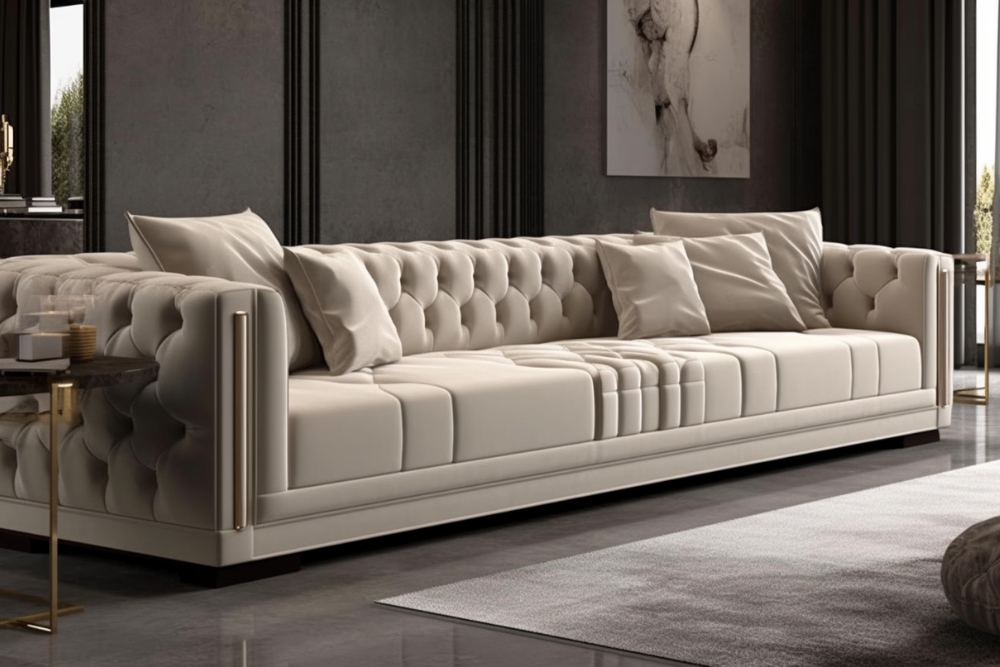The Silent Elegance: Velvet Whispers in Modern Interiors
Velvet, once the fabric of royalty, is making a hushed comeback in contemporary homes. Its plush texture and rich hues are redefining luxury for a new generation of design enthusiasts. As we explore the resurgence of this sumptuous material, we'll uncover how it's transforming spaces from ordinary to extraordinary, one tactile surface at a time. Join us on a journey through the world of velvet interiors, where comfort meets sophistication in the most unexpected ways.

As manufacturing techniques evolved, velvet became more accessible, though it never lost its association with luxury. The Industrial Revolution brought about synthetic versions, democratizing this once-exclusive fabric. Throughout the 20th century, velvet experienced waves of popularity, from Art Deco glamour to 1970s bohemian chic. Today, we’re witnessing a renaissance of velvet in interior design, reimagined for modern sensibilities.
The Tactile Revolution: Why Velvet is Captivating Modern Designers
In an era dominated by sleek minimalism and hard surfaces, velvet offers a counterpoint of softness and depth. Its ability to play with light, creating shifting patterns as one moves through a space, adds a dynamic element to interiors. Designers are drawn to velvet’s versatility; it can be both a statement piece and a subtle accent, equally at home in a contemporary loft or a traditional manor.
The current velvet trend is characterized by unexpected applications. No longer limited to formal living rooms, velvet is finding its way into kitchens, bathrooms, and even outdoor spaces. This new wave of velvet use emphasizes texture as a key design element, allowing interiors to engage multiple senses. The fabric’s sound-absorbing qualities also make it a practical choice for creating serene environments in our increasingly noisy world.
Beyond the Sofa: Innovative Uses of Velvet in Home Decor
While velvet upholstery remains a classic choice, today’s designers are pushing boundaries with creative applications. Velvet wallcoverings, once considered ostentatious, are making a comeback in more subdued tones, adding depth and warmth to accent walls. In the bedroom, velvet headboards create a focal point that invites touch, while velvet draperies frame windows with elegance and improve insulation.
One of the most striking trends is the use of velvet in unexpected places. Velvet-covered kitchen islands make a bold statement while providing a luxurious tactile experience. In bathrooms, velvet-upholstered ottomans or chairs introduce an element of opulence. Even ceilings are getting the velvet treatment, with panels that add acoustic benefits along with visual interest.
Accessories offer an accessible entry point into the velvet trend. Throw pillows, area rugs, and even lampshades in velvet can transform a space without a major commitment. The key to incorporating velvet successfully is in the balance – using it as a textural contrast to smoother surfaces or as a rich accent against neutral backgrounds.
The Technical Side: Advancements in Velvet Production
Modern velvet is a far cry from its delicate ancestors. Technological advancements have resulted in durable, stain-resistant varieties that can withstand the rigors of daily use. Performance velvets, developed for high-traffic commercial environments, are now available for residential use, offering the luxury look without sacrificing practicality.
Eco-conscious consumers will be pleased to know that sustainable options are emerging in the velvet market. Recycled polyester velvets provide the same plush feel with a reduced environmental impact. Some manufacturers are even exploring plant-based velvets made from bamboo or cotton, offering alternatives for those seeking natural fibers.
The production process has also evolved, allowing for more intricate patterns and textures. Crushed velvet, with its multidimensional appearance, adds visual interest to furniture and accessories. Laser-cut velvet creates stunning geometric patterns, merging traditional luxury with contemporary design aesthetics.
Styling Velvet: Tips from Design Experts
Incorporating velvet into your home requires a thoughtful approach. Interior designers recommend starting small – a velvet accent chair or a set of throw pillows can introduce the texture without overwhelming a space. When choosing colors, consider the mood you want to create. Deep jewel tones like emerald or sapphire evoke opulence, while softer hues like blush or gray offer a more subtle elegance.
Mixing velvet with other textures is key to a balanced design. Pair it with rough natural materials like wood or stone for an interesting contrast. In a minimalist space, a single piece of velvet furniture can serve as a striking focal point. For a more eclectic look, layer different velvets in complementary colors and patterns.
Lighting plays a crucial role in showcasing velvet’s beauty. Natural light brings out the depth of color, while strategically placed artificial lighting can highlight the fabric’s lush texture. Consider the direction and intensity of light sources when positioning velvet pieces to maximize their visual impact.
The Future of Velvet in Home Design
As we look ahead, the velvet trend shows no signs of fading. Designers predict a continued exploration of texture in interiors, with velvet at the forefront of this tactile revolution. We can expect to see more innovative applications, such as velvet-clad kitchen cabinetry or velvet-lined closets, pushing the boundaries of where this fabric can be used.
Technology will continue to improve velvet’s performance, making it an even more practical choice for everyday living. Smart textiles may soon allow velvet to change color or pattern with the touch of a button, offering unprecedented customization options.
The velvet renaissance is more than just a passing trend; it’s a reflection of our desire for comfort and luxury in an increasingly digital world. By embracing this tactile, visually rich fabric, we’re creating spaces that engage our senses and provide a refuge from the outside world. As we continue to redefine luxury for the modern age, velvet stands as a testament to the enduring appeal of timeless materials reimagined for contemporary living.





